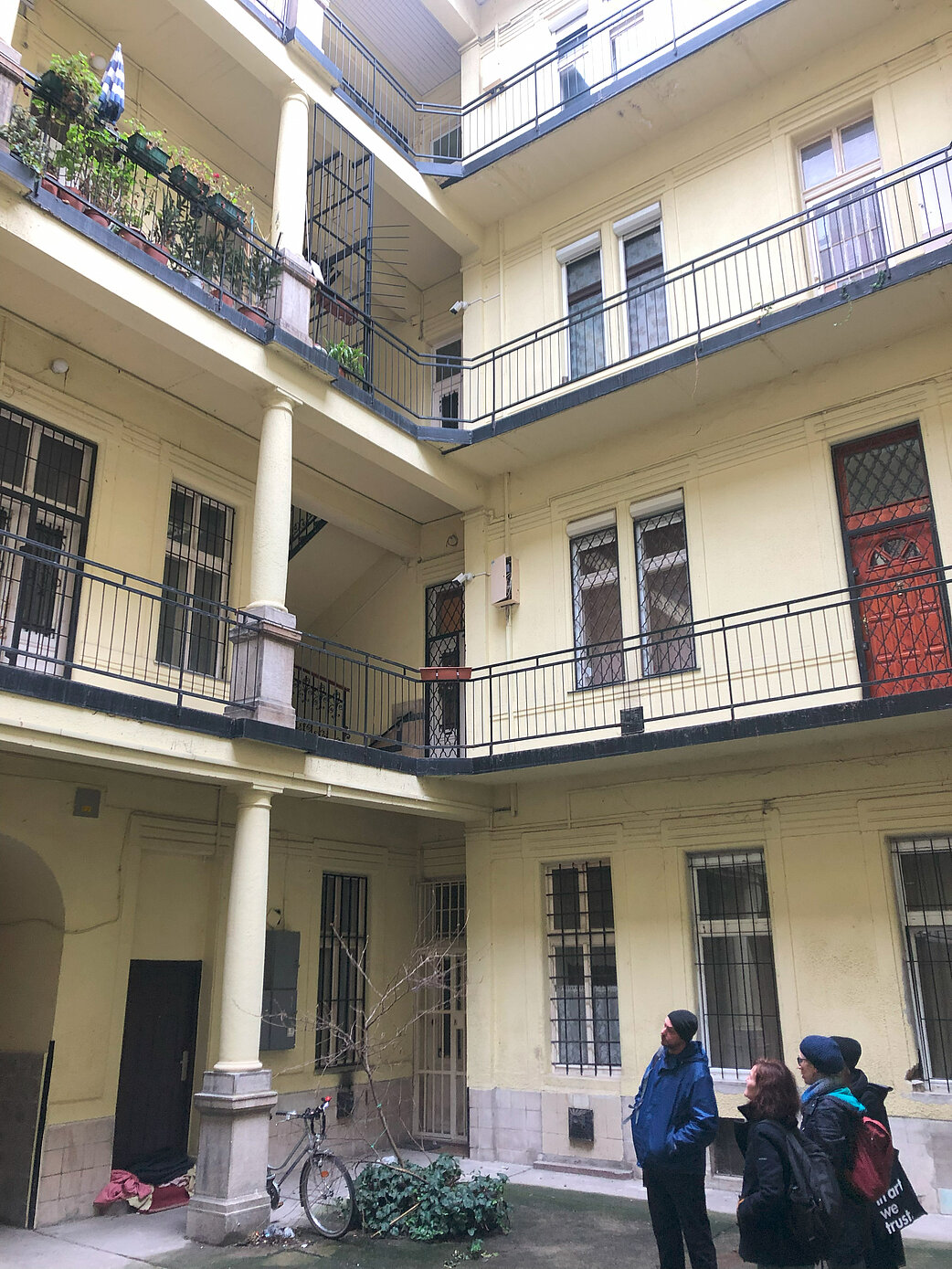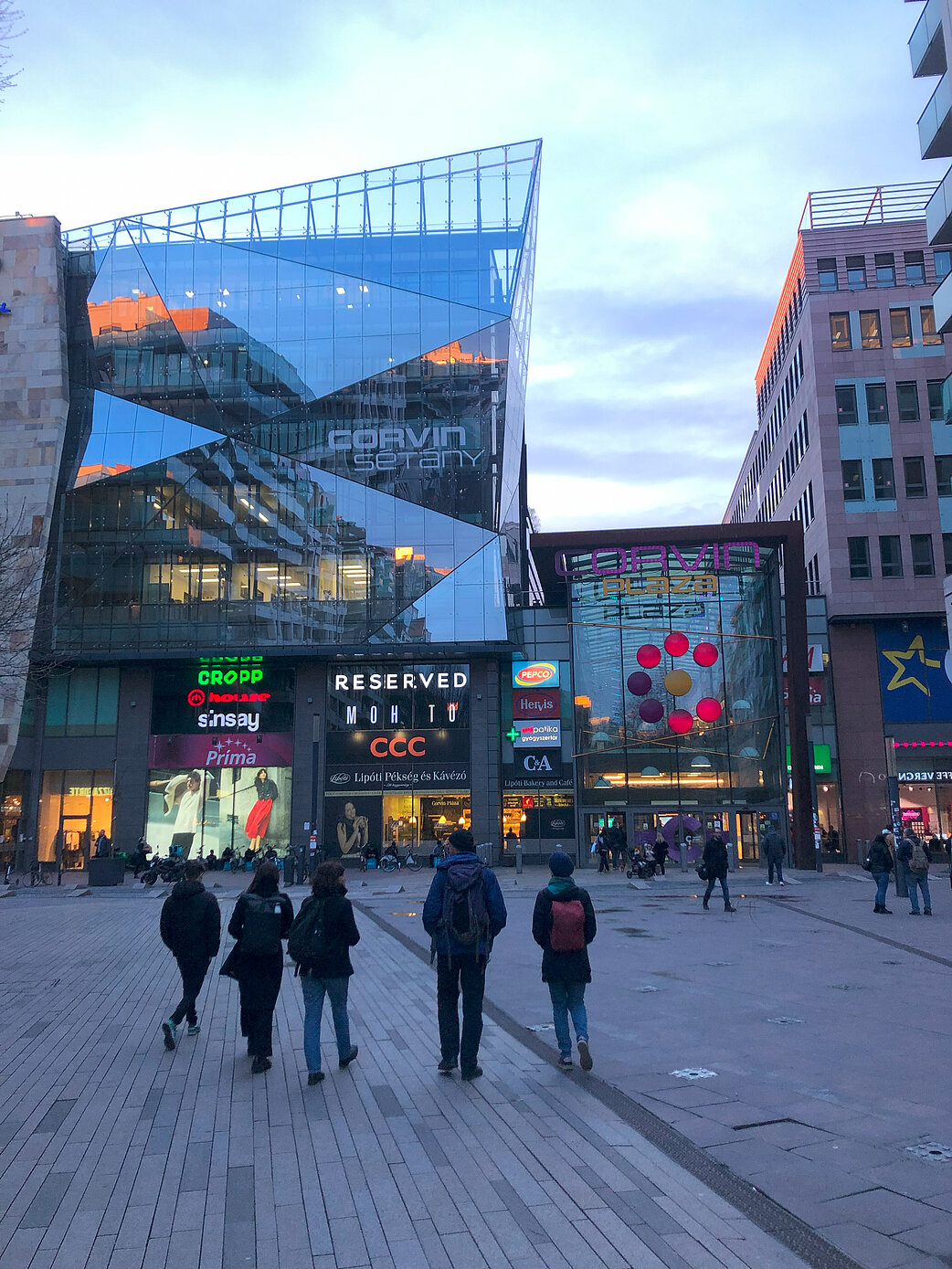12.02.2024
As part of the project TransHerit, our team from the Institute for Urban and Regional Research visited Budapest on the 12th of February 2024 to look for potential areas for place studies. Led by Hanna Szemzö, who is a sociologist and co-director of the Metropolitan Research Institute (MRI), we walked through the 6th, 7th, and 8th districts. Each of these areas has a significant Gründerzeit building stock, with buildings in very different conditions, depending on their location and the (lack of) interventions that have been implemented. During our city walk, we were able to visit some of the typical Gründerzeit tenement buildings of Budapest. By looking at several streets, buildings and courtyards on site, we could witness the different methods the districts use to address urban decay or to attract developers and businesses to help preserve or maintain this historic housing stock. It should be stated here that after the fall of socialism in 1989, a two-tier system took place in Budapest, where responsibilities and competencies were given to the districts. There were for instance in charge of managing the privatization process of the housing stock, by offering them for purchase at a lower market price to tenants, as well as its maintenance. Hanna highlighted that depending on the regulations (that can vary in each district in Budapest), as well as on the legislation of condominiums and their management, unique transformation processes have been taking place in the different districts. This diversity in maintenance strategies, which also entails demolition, makes the selected districts interesting for further investigation. The team ended the tour with the Corvin Quarter project, which became an island of new residential and commercial development (many would use the term new build gentrification) in a poor and rather under maintained part of the 8th district. The next step is to select areas for further investigation, as a means to research how different interventions on this historic housing stock affect the surroundings, historical (non-UNESCO) areas and their population. Furthermore, we would like to understand more about the connections and relationships of the residents and users to the cultural heritage these buildings represent.
Participants:
Hanna Szemzö (MRI, Budapest), Sandra Guinand, Viktória Éva Lélek, Robert Musil, Maximilian Wonaschütz (ÖAW/ISR)


Map © TransHerit | Lélek